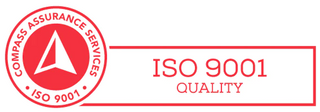
Magnetic Product Description:
This neodymium magnetic block has a length of 10mm, width of 2.8mm and a height of 1.9mm. It has a magnetic flux reading of 4537 Gauss and a pull force of 0.827 kilos. It is identified by the AMF magnet part number B-W2.8H1.9L10-N50Bni.
Uses for our rare earth block magnets:
Rare Earth Block magnets are available in every size from large to small. They are used in a wide range of applications and have acquired various descriptive names including rectangular magnets, square magnets, bar magnets and cube magnets.
Neodymium was first discovered in the 1980s and it has largely superseded traditional types of magnets in most commercial operations where the strength of Neodymium type of magnet relative to its size is valued. However, older types of permanent magnets still have their place, particularly in high temperature and moisture-laden environments that would otherwise be detrimental to Neodymium magnets.
In order for Neodymium magnets to be used in high humidity environments a special coating such as Teflon, Gold or Parylene-C is often required. However, most Neodymium blocks come with a standard Nickel coating that provides a reasonable level of resistance to corrosion.










